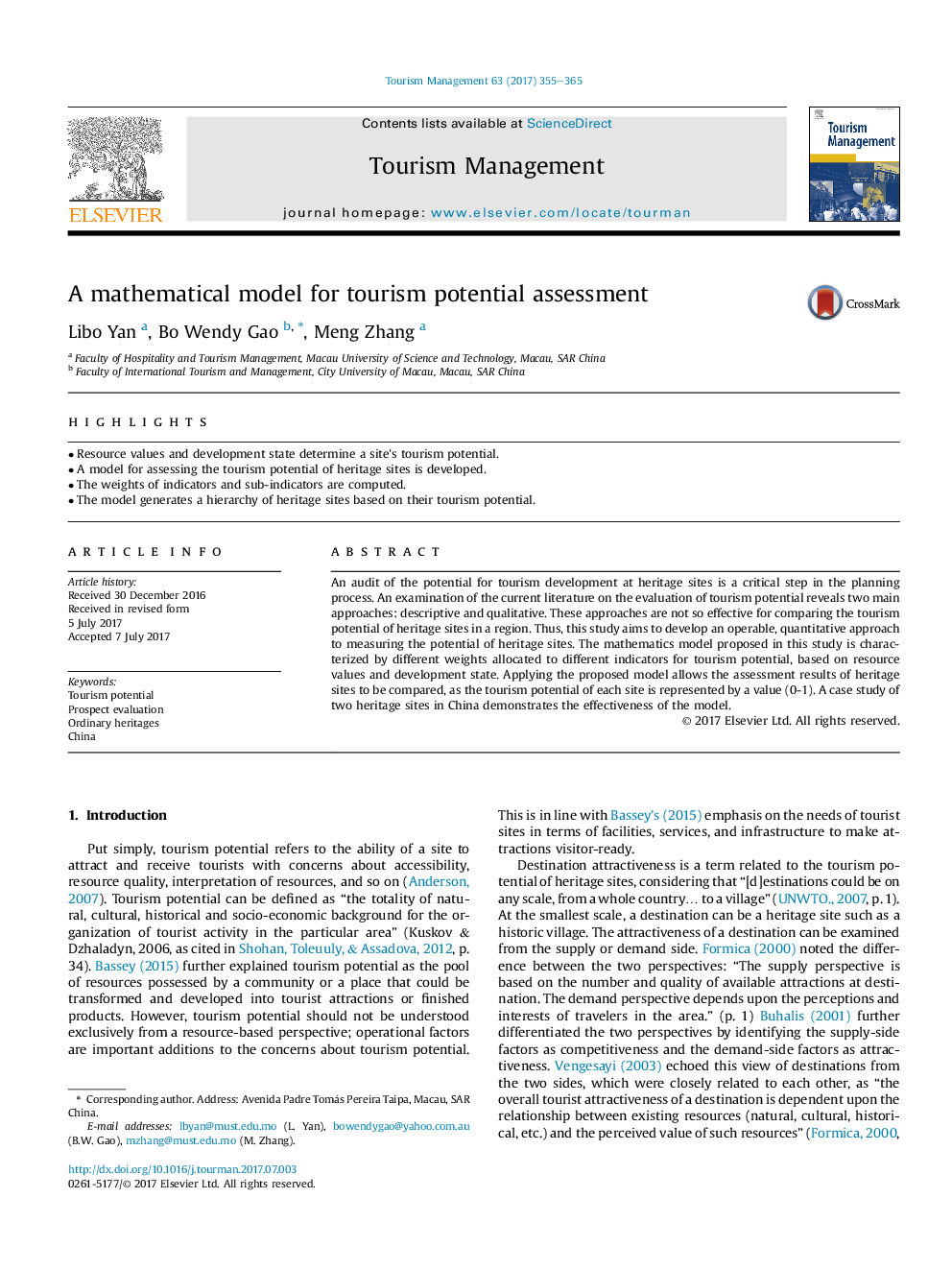ترجمه فارسی عنوان مقاله
یک مدل ریاضی برای ارزیابی توانایی گردشگری
عنوان انگلیسی
A mathematical model for tourism potential assessment
| کد مقاله | سال انتشار | تعداد صفحات مقاله انگلیسی |
|---|---|---|
| 148832 | 2017 | 11 صفحه PDF |
منبع

Publisher : Elsevier - Science Direct (الزویر - ساینس دایرکت)
Journal : Tourism Management, Volume 63, December 2017, Pages 355-365
ترجمه کلمات کلیدی
پتانسیل گردشگری، ارزیابی چشم انداز، میراث عادی، چین،
کلمات کلیدی انگلیسی
Tourism potential; Prospect evaluation; Ordinary heritages; China;
ترجمه چکیده
ممیزی پتانسیل توسعه گردشگری در سایت های میراث فرهنگی گام مهمی در روند برنامه ریزی است. بررسی ادبیات در حال حاضر در مورد ارزیابی پتانسیل گردشگری نشان می دهد دو رویکرد اصلی: توصیفی و کیفی. این روش ها برای مقایسه پتانسیل گردشگری سایت های میراث در یک منطقه بسیار موثر نیست. بنابراین، این مطالعه با هدف توسعه یک رویکرد کارآمد و کمی برای اندازه گیری پتانسیل سایت های میراث فرهنگی است. مدل ریاضی ارائه شده در این مطالعه با وزن های مختلفی که به شاخص های مختلف برای پتانسیل گردشگری اختصاص یافته است، بر اساس ارزش های منابع و وضعیت توسعه مشخص می شود. با استفاده از مدل پیشنهادی، می توان نتایج ارزیابی سایت های میراث را مقایسه کرد، زیرا پتانسیل گردشگری هر سایت با مقدار (0-1) نشان داده شده است. مطالعه موردی دو سایت میراث در چین نشان دهنده اثربخشی مدل است.

